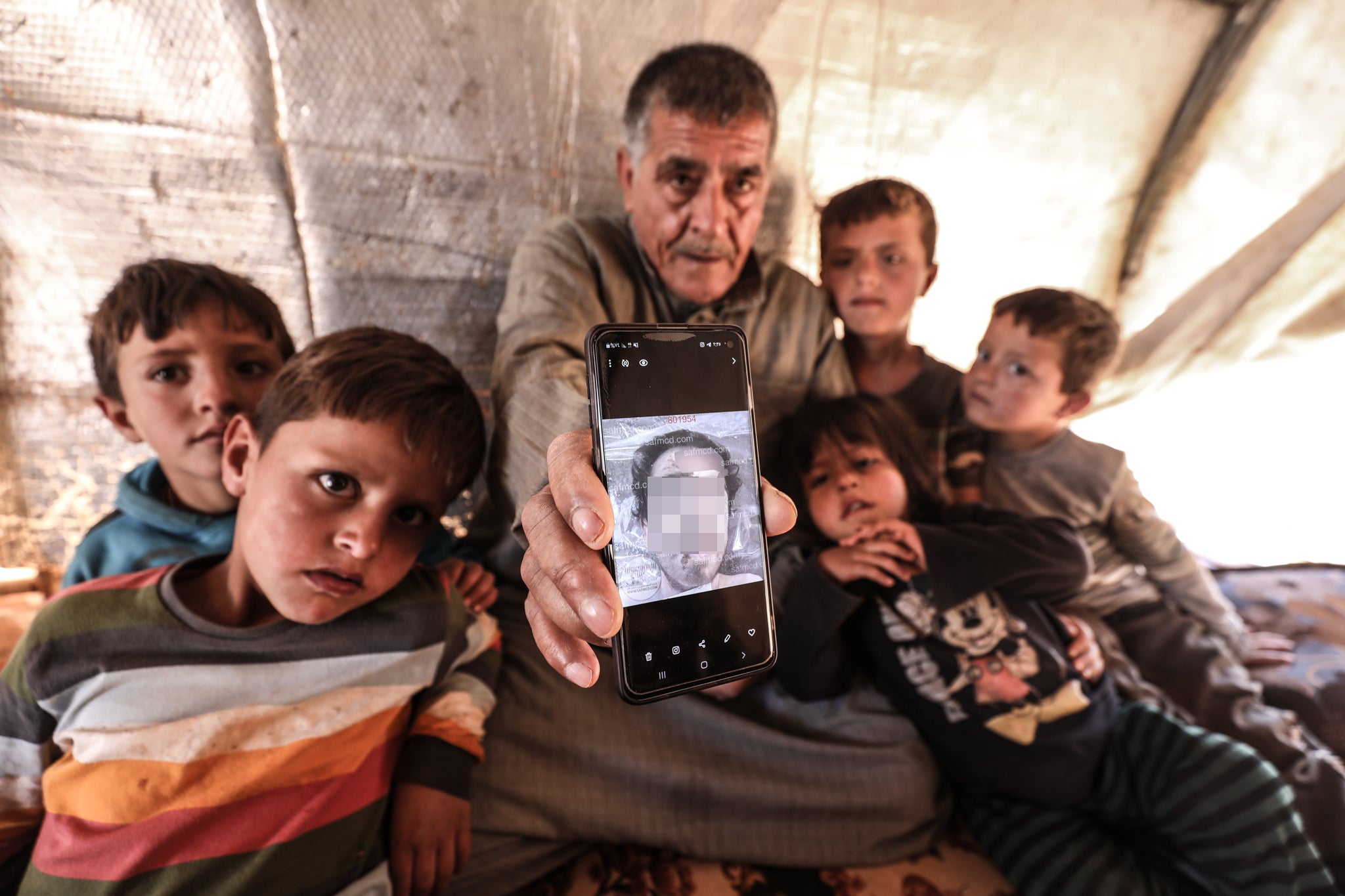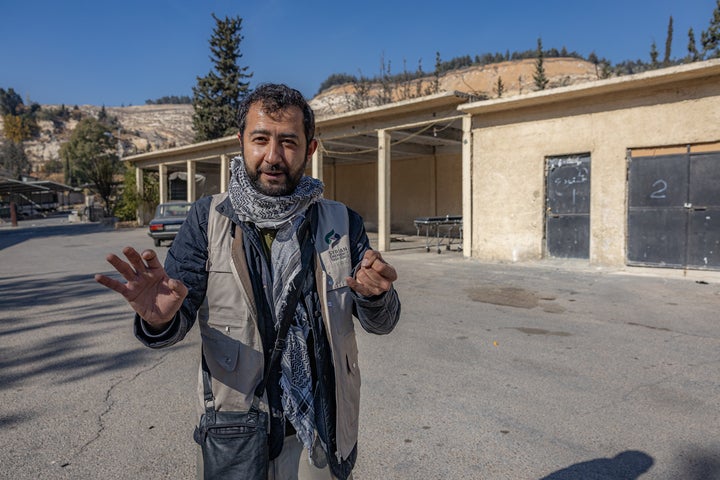Syrian defector who smuggled torture images out of country warns of hundreds of thousands of deaths
Photographer codenamed Caesar who captured more than 53,000 pictures documenting the horrors of the Assad regime tells Bel Trew how he risked his life to show the world what was happening – and his fears for what is still to be found
Your support helps us to tell the story
From reproductive rights to climate change to Big Tech, The Independent is on the ground when the story is developing. Whether it's investigating the financials of Elon Musk's pro-Trump PAC or producing our latest documentary, 'The A Word', which shines a light on the American women fighting for reproductive rights, we know how important it is to parse out the facts from the messaging.
At such a critical moment in US history, we need reporters on the ground. Your donation allows us to keep sending journalists to speak to both sides of the story.
The Independent is trusted by Americans across the entire political spectrum. And unlike many other quality news outlets, we choose not to lock Americans out of our reporting and analysis with paywalls. We believe quality journalism should be available to everyone, paid for by those who can afford it.
Your support makes all the difference.The Syrian military defector codenamed Caesar, who smuggled out more than 53,000 haunting images showing tortured, emaciated corpses of Syrian detainees – evidence that led to landmark sanctions – has warned that they are merely a “snapshot” of the full extent of crimes committed under the Assad regime.
Speaking exclusively to The Independent, the photographer also revealed how he managed to get the photographs out of Syria, hiding USB flash drives of evidence in his underwear before he was smuggled out of Syria with the help of rebels via a flour truck to Jordan.
His family reported him kidnapped and murdered by terrorists to provide cover for his escape.

The former military photographer, who has testified anonymously about the evidence of savagery he witnessed to governments around the world, called for global efforts to assist Syria in bringing those responsible for the “worst crimes of the 21st century” to account.
The Independent spoke to Caesar, who has been living in absolute secrecy for a decade, by phone as our correspondent visited Military Hospital 601 in the Mezzah neighbourhood of Damascus, the exact spot where he took many of the horrific images that shocked the world.
Now empty since the stunning overthrow of Bashar al-Assad last weekend, the building stands as a chilling monument to the industrial-scale horrors committed by the former regime.
The images Caesar took, which also included photos of attack sites and the bodies of armed fighters or civilians killed in assaults, provided the first extensive glimpse into the atrocities committed by Assad’s government after the start of the 2011 revolution, which turned into a bloody civil war.
The images which showed emaciated mutilated bodies, some with eyes gouged out and numbers written on their arms or heads, were verified by human rights organisations and the FBI.
“I took photographs from 2011 to 2013. During that time, I personally saw at least 11,000 dead men, women, children, and elderly people,” he told The Independent from exile, in his first interview since the fall of the Assad regime.
“I took almost 55,000 photographs of people who were tortured. And that was just in one place – just in Damascus. It was only a snapshot in time, geography, and place.
“I can tell you this was happening everywhere else. So, in terms of how many people have been literally tortured to death, it’s in the hundreds of thousands.”
He said that during the three years he was taking these photographs and smuggling them out, he lived in “fear and terror”, knowing that if the government found out what he was doing, “I would become one of those bodies.” Despite this, he expressed his willingness to return to help with investigations in Syria and called on the international community to support these efforts.
The Independent spoke to Caesar together with Mouaz Moustafa, the founder of a US-based NGO, the Syrian Emergency Task Force, which helped smuggle the photos out of Syria via USB drives and raise awareness globally.
Moustafa, who has missing family members and friends himself, stood in a scrubby courtyard where bodies were once laid out, numbered, documented, and photographed, their faces and bodies mutilated, emaciated from starvation and illness.
During our interview, Moustafa spoke to Caesar on the phone to confirm the exact location – although some of the buildings have been changed since the photos were taken over a decade ago.

He explained that Caesar spent two-and-a-half years uploading images from his job onto a flash drive, which he hid in his underwear or socks each day, as he went through checkpoints on his way home. Some images were sent via the internet, but the sheer volume of files made it impossible to send everything that way.
Eventually, Moustafa says he was smuggled through rebel-held areas of Damascus and then out of Syria, hidden in a truck carrying flour, into Jordan. Along with him were the hard drives containing images, photos of documents showing command responsibility, and evidence of disappearances.
Moustafa said Caesar’s family then reported to the regime authorities a week later that he had been kidnapped and killed by terrorists and requested permission to attend a funeral in southern Syria, which provided a cover for their escape. Caesar then undertook a gruelling journey through multiple countries in the region before finally reaching Europe where he was granted asylum.
Since escaping Syria a decade ago, Caesar has toured the world anonymously – his face and voice concealed – testifying before governments and parliaments. He repeatedly warned that the 150,000 people believed to still be imprisoned in Syria could meet the same fate as the people in his photographs. This warning is proving chillingly accurate, as families of the country’s missing have flocked to prisons, morgues, and hospitals that have opened for the first time since Assad’s dramatic ouster last week.
His photographs led to the landmark Caesar Act in the US in 2019, which imposed sanctions on regime officials and those supporting Assad’s military efforts during the Syrian civil war, including foreign businesses. The act also granted authority to the US secretary of state to support entities collecting evidence and pursuing prosecutions against individuals who committed war crimes in Syria.

Speaking from the hospital, Moustafa described how detainees’ bodies were ferried there on trucks, within sight of the presidential palace located just a kilometre away on a nearby hill, with numbers written on their foreheads.
“We spoke to physicians who explained that after Caesar photographed the bodies in this area, they were loaded onto trucks and taken away. For a long time, we didn’t know where they went until we discovered the mass graves when we met the gravediggers,” he added.
Caesar, who still has not revealed his true identity, has offered to return to Syria to help the incoming authorities collect evidence. “I’ve spent my life serving the Syrian people,” he told The Independent. “Even after I finished the photos, I travelled the world, going to the United States Congress and showing what was happening. Back then, today, and in the future, I will continue to serve Syria.
“If the new government of Syria calls on me to come and help with accountability, I would be the first one here. Absolutely. I will intervene.”
He also stressed that the world must work to find and prosecute those responsible.
“The whole world should remember that the Syrian people suffered the worst crimes of the 21st century. What we are seeing now, as they investigate the liberated intelligence branches and prisons, is the worst kind of torture.
“It is very important that Assad’s regime and the thugs who committed these horrible genocidal crimes are held accountable. For far too long, there was no justice.”




Join our commenting forum
Join thought-provoking conversations, follow other Independent readers and see their replies
Comments